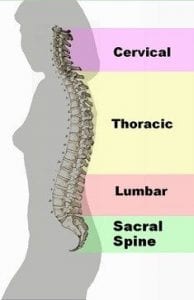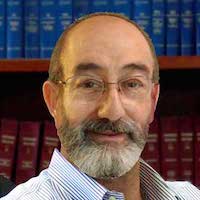
In this segment, we take an overview of non-surgical techniques for spine health. In principal, much of the information we offer here is applicable for the cervical spine (neck) as well, although we hope to cover that as a separate topic in a later post.
An initial caveat: whatever you choose to do, including surgery, if you smoke it will make recovery much more difficult, if not impossible.
Generally speaking, your options are two basic modalities:
- Several number of passive treatments which should alleviate pain, and
- Using active exercise—the physical therapy approach.
Both have their roles in making you more comfortable and helping you get back to a functional level of activity.
In addition, there are two main approaches to physical therapy; either working on general mobility and strength and therefore alleviating the particular problem, or working from the point of injury outward to general mobility and strength.
From our experience, passive therapies have short-term value in alleviating initial pain, but you must improve strength and mobility. By working and stretching back muscles and correcting your posture and movements you will attain renewed function and long-term relief. For example, continuing pain relievers will do nothing to improve your problem, only mask the problem which needs to be treated.
Recovery is hard work, but it can be done. Peter Attia, whom we’ve quoted before for his exercise and recovery tips, writes:
I worried whether I’d ever walk again and had begun to accept the fact that I may be addicted to pain killers for the rest of my life…Things I once took for granted – walking, being able to lean over the sink while brushing my teeth, sneezing without feeling like my kidneys were being ripped out – became distant and fading memories…Fortunately, with the help of some remarkable doctors…, kinesiologists, and physical therapists, I would slowly learn to move again without pain.
A very useful overview of treatments notes that non-drug approaches for pain relief include: hot and cold packs, low electric current nerve stimulation therapies such as iontophoresis or TENS units, and also ultrasound. Acupuncture using current is also an option. Obviously, these are options to discuss with your care provider, and should be used as appropriate for your particular injury. If you are not getting improvement, your care provider should be flexible in suggesting another form of treatment.
In physical therapy, as we mentioned previously, there are two directional options of working to rebuild functionality. In the first, the “lumbar stabilization” approach, the idea is to build your overall strength and achieve awareness and control over your movement. This should reduce pain and allow soft-tissue injury, such as muscle strain or torn ligaments to heal.
The major added benefit is that this “re-training” should help you reduce the chance of re-injuring your back.
The second method is to use observation to see where the patient is straining the back in daily activity and correct these problems, again via an exercise regimen and correcting movements and posture. This is called the “McKenzie Method”, and it seeks to pinpoint when and how pain is triggered, and then work to correct these specific episodes.
In either method, the patient must work to re-train how he or she sits, stands, moves and lifts objects during day-to-day activity. When you work with a physical therapist, always make sure you get clear, preferably printed instructions on how to do your exercises at home. Videos are also helpful, as they show the complete range of motion for each exercise.
Your best chance of getting your life back means working at your therapy and making conscious changes during the day.
Remember, the attorneys at Stillman and Friedland are always here to help you on your road to recovery.
Because we care…
* This blog entry should not be construed as medical advice or treatment for any specific condition. Only a licensed medical professional can properly diagnose and treat medical conditions. If you have any questions regarding your health, please consult with your healthcare provider.






